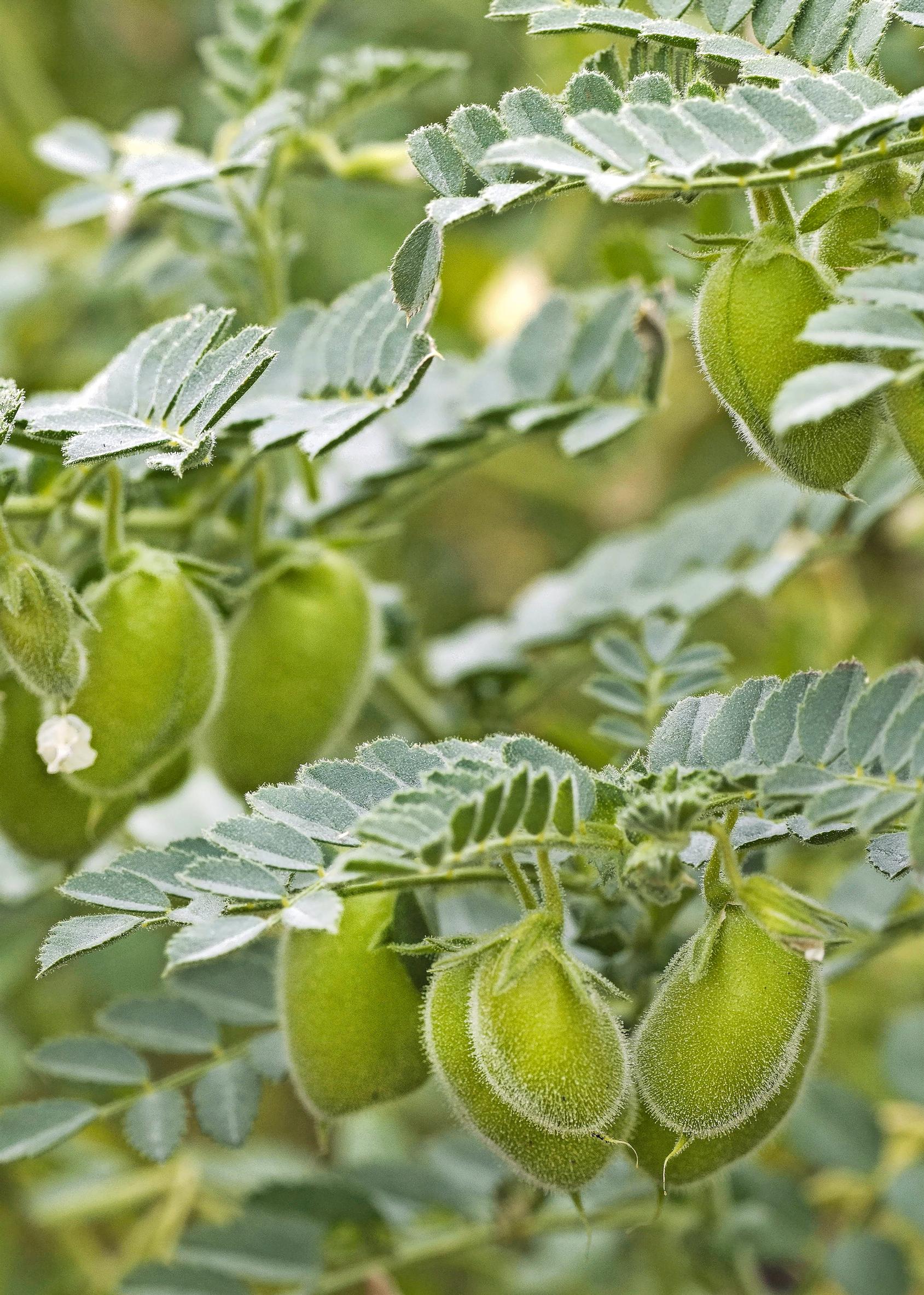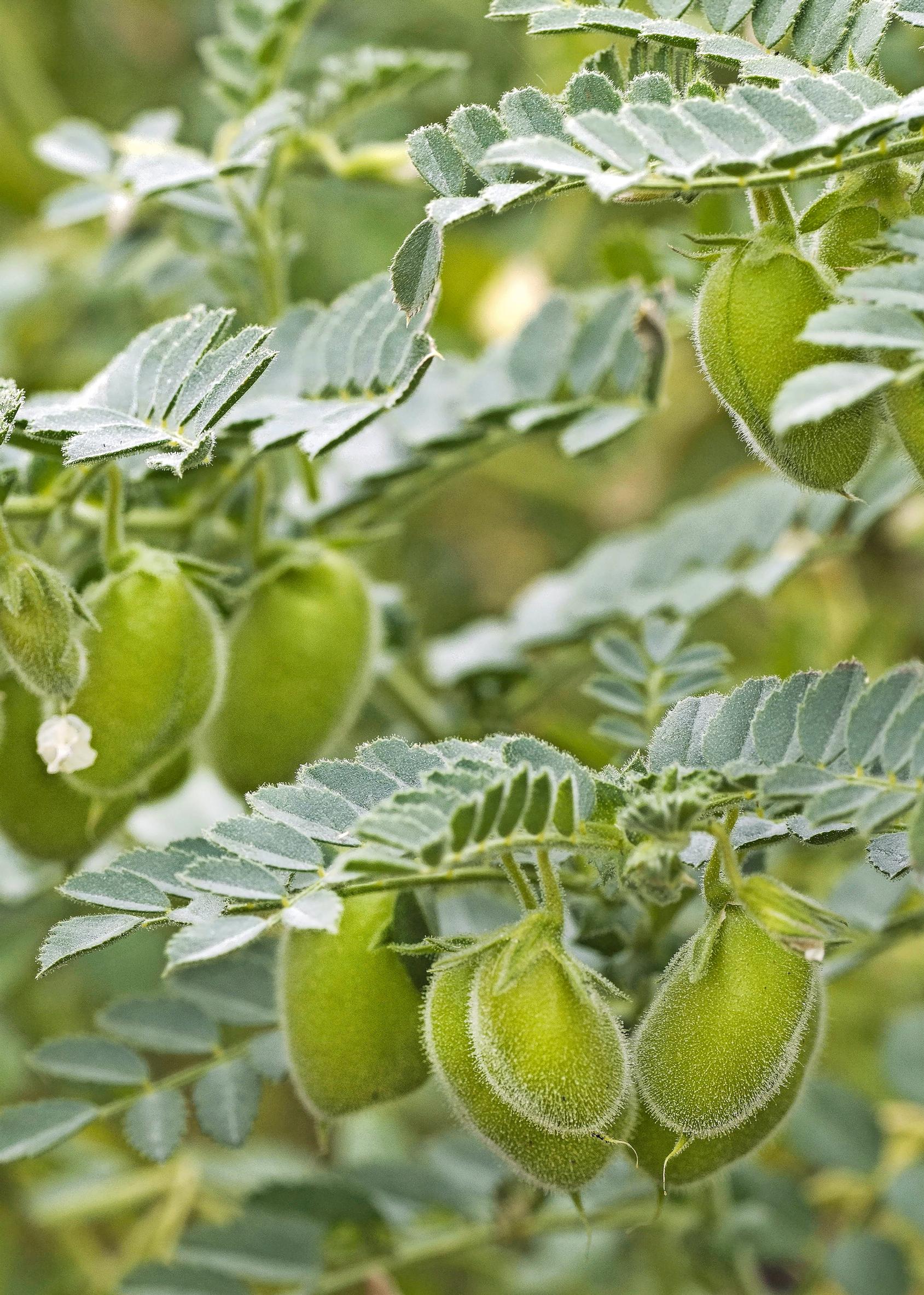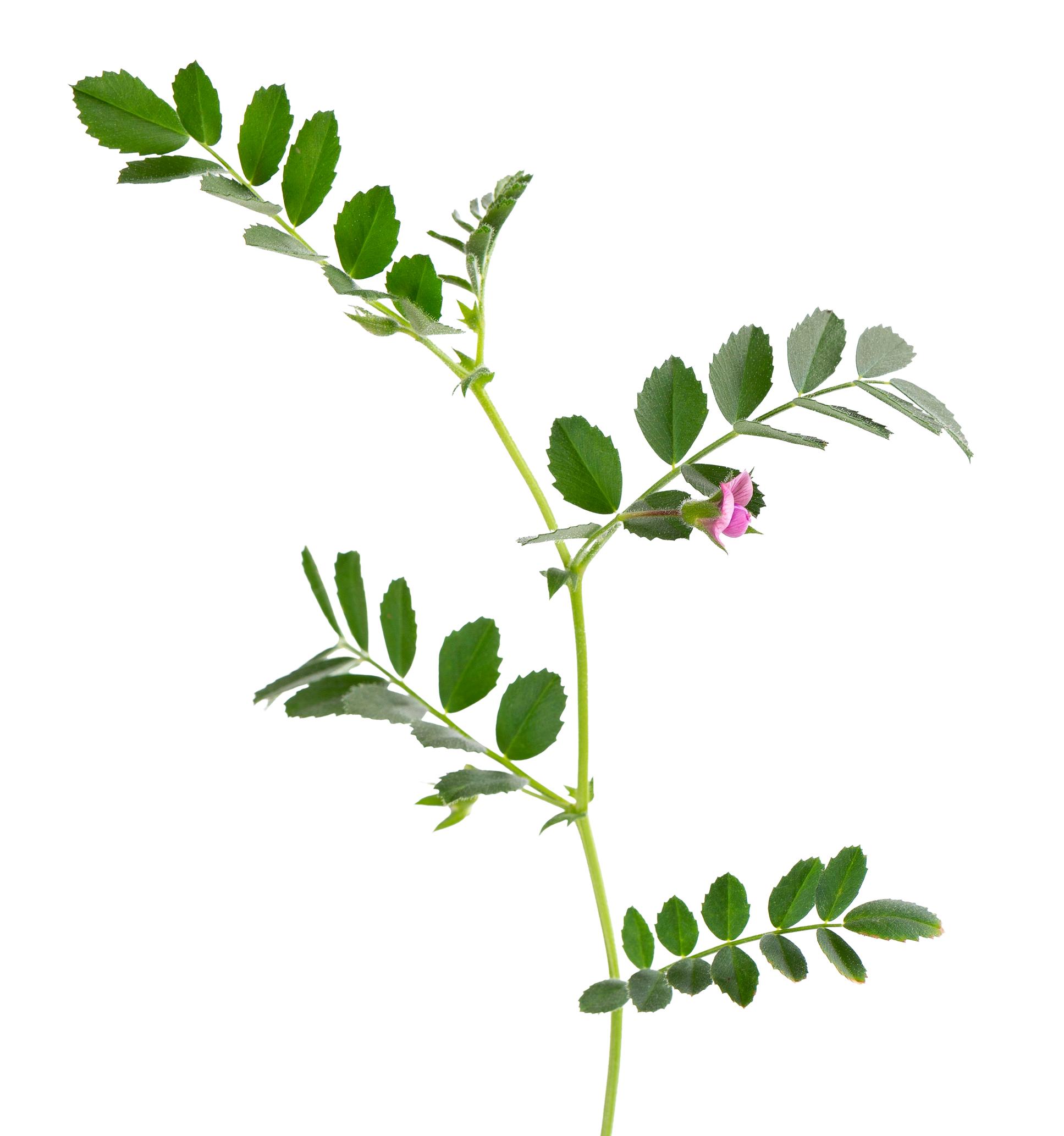
Try growing your own chickpeas! They’re especially juicy when harvested while still immature
A warm, sheltered spot is ideal for growing chickpeas. If you’re lucky, you can still harvest them well into September!
Starting seedlings is essential for growing chickpeas in the Finnish climate, as it helps ensure a harvest and brings it on earlier. Chickpeas will keep producing new flowers and pods as long as the weather stays warm. You can pick the pods when the seeds are still soft and juicy or let them grow firm until they reach full size.
Chickpea growing—here’s how it’s done!
Starting chickpea seedlings
Start seedlings for 1–1.5 months to speed up your harvest. Direct sowing is also an option which may yield a decent harvest if the summer is warm and long. Soak the seeds in water for a couple of hours, then sow them individually in pots, and germinate at about 20°C. Keep the pots in a bright spot indoors. Gradually acclimate the seeds to outdoor conditions, and plant outdoors once the risk of frost bite has passed.
Chickpea site and care
Chickpeas grow best in a sunny, sheltered location. Growth suffers at temperatures below 15°C. The ideal temperature for pod formation is 25–30°C. You can improve warmth by planting seedlings in a greenhouse or tunnel or by placing them against a sheltered wall.
Support the plants with two stakes placed diagonally, and cover them with a row cover for protection. Deer and hares enjoy chickpeas, so it’s best to protect your crop early on. Later in the season, birds may reduce the seed yield. The chickpea is self-pollinating, so covering the plants when they flower won’t affect the harvest. A cover is also helpful in cooler parts of spring and fall and during unsettled summer weather.
Loose, well-draining soil and raised beds help keep the root zone warm. Straw, sheep’s wool, green mulch, and other covers stabilize soil temperature and moisture levels.
Use moderate fertilization. Although the chickpea is nitrogen-fixing, the specific bacteria it requires may be insufficient in the soil.

Harvesting chickpeas
Pick the pods when the seeds are young and tender, as well as when they have become firm. Young leaves and whole pods can be used in cooking, but it’s best to use them sparingly because of their oxalate and tannin content.
Leave the lowest pods on the plant to fully mature if you want to save some seeds for sowing.
“Fresh chickpeas only need 5–10 minutes of cooking time.”
Choose your seeds carefully
Seeds intended for consumption are not recommended for cultivation because they may carry plant diseases or pests.
One commonly sold chickpea variety is ‘Principe,’ which dates back to the Middle Ages, is fairly vigorous, and reaches about 60 centimeters in height. You can also find unnamed seeds, although they can be hard to source.

Expert: Senior Researcher Marjo Keskitalo / Natural Resources Institute Finland (Luke).


